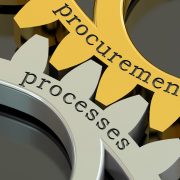Procurement is the process by which an organization finds and acquires all the goods and services that enables them to operate effectively. The procurement process on the other hand refers to the steps the organization must take to acquire the goods and services to run the business. This process helps organizations achieve desired results while reducing time, saving cost and creating a win-win relationship with the supplier.
Organizations can have direct, indirect or service procurement.
- Direct Procurement. It is the acquisition of goods, materials or services for manufacturing purposes. Direct procurement includes things like raw materials, machinery and resale items.
- Indirect Procurement. It is the sourcing and purchasing of materials, goods and services for internal use. For example, facility management, utilities and travel. It takes care of day to day operations.
- Service Procurement. It involves procuring and managing the contingent workforce and consulting services. For example, software subscriptions or professional services. It helps in purchasing external staff and services.
This write-up will highlight the organization of the crucial steps that need to be followed to acquire goods and services.
1. Identify Goods or Service Needed
Before you can procure anything, there has to be a need for it. Recognizing the need for a product or service is the first step in the procurement process. It can be a brand-new product or something the company is re-ordering. Head of departments, business owners, executives, procurement managers or employees can handle this step. It involves identifying the needs of every department and setting a budget. This provides you with a clear outline of all the spending that the company requires. Therefore, you can be able to figure out areas in business where you can cut costs and save money.
2. Submit a Purchase Request
After identifying the need, a purchase request is submitted to the company by the person requiring the purchase. The request will be reviewed by the finance controller or the procurement team. If it is approved, a purchase order will be made.
3. Consider a List of Suppliers
It is very vital to find the correct supplier for your business. A wrong supplier could have a negative effect on the whole business. Your business operations could delay if the goods and services are not delivered in time. With a wrong supplier, you may also end up paying more for goods and services than required.
You should weigh some options when looking for a supplier. Make a list and compare all the options. In this way, you will be able to identify different areas in which they excel. A leading supplier should have accountability, ease of communications, production capabilities, ethics and prioritizing building relationships.
4. Negotiate Contract Terms with Selected Supplier
After you have identified your supplier, negotiate your contract terms with them. This is the stage at which you will agree on a price that is fair for both parties. The contract covers more than pricing. It should take into account the scope of the whole project-terms, delivery timelines and conditions. You should always have a copy of the contract to refer to in case anything delivered is not up to your expected standards.
Before entering into negotiations with the supplier, you should analyze the previous contracts to pinpoint opportunities that will help you modernize costs and save money.
5. Finalize the Purchase Order
Once the supplier has the contract and both parties are happy with the detailing, the next step is finalizing and sending the purchase order. The purchase order document will define:
- A description of good or service.
- Quantity
- Total costs
- Approval of workflow
Once the purchase order is approved, the finance team can now release the details to the supplier. This will enable them to access the important information they require, such as the reference number, payments terms agreement or any other essential information they may need.
6. Receive Invoices and Process Payments
The supplier will send you invoices describing the agreed price and instructions on how to pay after he receives the purchase order. The invoice will also consist of your order. Depending on your contract agreement, the invoice will have the details of the period allowed before you can make the payments.
7. Delivery and Audit of the Order
Depending on your contract terms, the delivery should arrive after the supplier has received the purchase order. You should always counter-check the products upon arrival. This will ensure that every product which was ordered has been delivered. The procurement team should use the 3-way approach to reconcile which involves checking the purchase order, packaging slips and vendor invoices. The approach will help identify any discrepancies.
8. Maintain an Accurate Record of Invoices.
Keep a record of all your payment and invoice records for future audit purposes.
A solid procurement process can help your business cut cost. The steps outlined above are the foundation of any vendor-purchaser relationship. However, the step may vary from business to business depending on various factors such as the size of the company.


















